Country Report: Colombia
Emerging as a bastion of peace, stability, and resilience in a region increasingly beset by political turbulence and economic stagnation, Colombia has been steadily reinventing itself as a Latin American pioneer and pacesetter, including in the world of healthcare.
Emerging as a bastion of peace, stability and resilience in a region increasingly beset by political turbulence and economic stagnation, Colombia has been steadily reinventing itself as a Latin American pioneer and pacesetter. Indeed, as Venezuela plunges into chaos and the traditional heavyweight markets of Brazil and Argentina continue to falter, Colombia looms proud, boasting GDP growth rates of around two percent for 2017, imminent membership of the OECD's "rich nations club" and a consistent sovereign credit rating of BBB. "15 years ago, we were on the brink of becoming a failed state and our economy was in reverse gear, but our turnaround has been spectacular and we have come to be seen as a flourishing, star economy and a highly prospective investment opportunity," enthuses President Juan Manuel Santos.

This sponsored supplement was produced by Focus Reports.
Project Director: Roxane Höck
Senior Editor: Louis Haynes
Project Coordinator: Anamarija Svedrec
Project Assistant: Anna-Luisa Vogt, Alan Le Roux
Project Publisher: Mariuca Georgescu
Editor: Patrick Burton
Graphic Assistance: Miriam León, Laura Breitfeld
For exclusive interviews and more info, please log onto www.pharmaboardroom.com or write to contact@focusreports.net
“There can be absolutely no doubt that Colombia has advanced in leaps and bounds, when you consider the old narrative of narco-terrorism, insurgency and rampant criminality,” recalls Colombian Ambassador to the Unites States, Camilo Reyes. “Investor sentiment has been firming up considerably in the wake of a sturdy peace process and proper enforcement of the rule of law,” he notes “and the chief commercial appeal, right now, derives from an attractively sized market of some 49 million people, a burgeoning middle class with a taste for new products and services, as well as a business-friendly, open market economy and stable operating environment.”
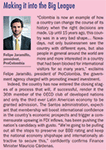
These positive business winds are also being replicated across strategically significant economic sectors such as the pharmaceuticals and life sciences industries. According to the latest forecasts from La Asociación Nacional de Empresarios de Colombia (ANDI), thriving domestic consumption is set to propel the value of the local pharma market from USD 5 billion in 2015 to USD 7.1 billion by 2020, representing a compound annual growth rate of as much as 7.3 percent. “Globally, we can now be considered a pharmerging nation given that our industry is outpacing most traditional markets,” explains Rodrigo Arcila Gómez, the association’s executive director.

Juan Manuel Santos, president of Colombia
The same can be said for the Colombian medical device market. “The medtech segment is already reaching close to double digit growth and our figures are telling us that this USD 1.2 billion market will be valued at 1.8 billon by the end of the decade,” reflects Kenneth García Márques, managing director of Smith & Nephew. “I reckon that investors will be hard pressed to find such an alluring scenario elsewhere: a highly underserved marketplace according to incidence and prevalence levels of many health indications, growing purchasing power, an ageing population along with the political will to increase coverage and access to quality healthcare.”

Alejandro Gaviria, minister of health and social protection
“Pharmaceuticals and medtech together certainly rank as one of those high-performance, growth sectors powering the prevailing economic boom,” agrees Invest in Bogotá’s executive director, Juan Gabriel Pérez. “Moreover they can be credited with contributing to the current rising economic prosperity of our capital city. A full 67 percent of pharmaceutical manufacturers and 50 percent of medical device players are concentrated in Bogotá, which also periodically plays host to prestigious Biopolis events that gather together some of the most significant actors in the biotech and life sciences fields.”

Camilo Reyes, ambassador of Colombia to the United States
THE NATIONAL HEALTHCARE SYSTEM: JEWEL IN THE CROWN
It is perhaps, however, in the healthcare arena where Colombia most distinguishes itself from its neighbors and has managed to cultivate a reputation for being a real outlier. “Colombian public healthcare incontestably rates as the best in Latin America with close to 97 percent coverage of the national population which is a rather impressive figure when you consider precisely where the country is along its development path trajectory,” reflects Servier’s general manager, Francois Léger. “In parallel to the free-at-the-point-of-delivery services, there’s also a robust out-of-pocket system too, meaning widespread access to a whole plethora of therapies, though the institutional market is tending to grow at a faster tempo than the private,” he adds.

Javier Humberto Guzmán, director general, INVIMA
Others very much concur. “Colombia is a key market for bioMérieux because of the quality of Colombian healthcare, the skills of its professionals and the many excellent hospitals. When it comes to innovation and health in the Latin American landscape, Colombia is at the avant-garde and being here helps us to take the pulse of Latin America,” observes Rocío Méndez, general manager of the French in vitro diagnostics and industrial microbiology specialist, bioMérieux.

Rodrigo Arcila Gómez, executive director, ANDI’s pharmaceutical industry chamber
International league tables certainly seem to support such perceptions of the country’s prowess in the medical science and healthcare provision domains. Global Health Intelligence (GHI)’s Latin America Hospital Database, for instance, calculates that as many as half of the top 43 best-equipped hospitals in the region are to be found within Colombia, while the World Health Organization (WHO) ranks the nation’s public health apparatus as 22nd out of the 191 countries they review, placing it ahead of both the United States and Canada.

Juan Gabriel Pérez, executive director, Invest in Bogotá
Little wonder then, that Colombia represents such a popular choice as a destination for medical tourism. “Some ten percent of users of Colombian private health insurance actually live abroad. For them, it is comparatively economical and cheap to get on a plane and travel here for their treatment and they are, of course, attracted by the great reputation of our doctors and surgeons,” notes Eduardo Franky, general manager of Italian pharma and chemical business, Zambon.

Yolanda Alagón, general manager, Janssen
In certain specific therapeutic areas, such as heart surgery, the phenomenon is especially pronounced. “Colombia is currently blessed with some 59 medical schools and around 1,100 cardiovascular specialists, so it is hardly surprising that American and Caribbean patients suffering from heart conditions are coming over here in increasing volumes because they know they will benefit from a high-quality yet considerably more cost-effective service,” reasons Enrique Melgarejo Rojas, president of the Colombian Society for Cardiology and Cardiovascular Surgery.

Mircea Cubillos, vice president Northern Region, J&J Medical
RAMPING UP THE LOCAL FOOTPRINT
With all these manifold attributes on offer, Colombia is fast becoming a destination of choice for multinationals, not only to set up shop in the sense of establishing a direct local affiliate, but also for opening regional headquarters and implanting managerial functions. “When you cast your eyes across the local landscape, it is clear that there has been a great deal of movement in recent months and years. Traditional big brand players like Bayer, Roche and Pfizer have been around a long time but, from around the year 2014 onwards, impressive growth figures have prompted the entrance of a multitude of global mid-cap players including Servier, Astellas, Shire, and Menarini, and, right at this moment, we are on the cusp of yet a further wave of investment: this time from rapidly emerging turbo economies such as India and countries from the Far East,” perceives Invest in Bogotá’s Pérez.

Kenneth García Márques, managing director, Smith & Nephew
One of the most notable big-ticket investments underway is that of Johnson & Johnson (J&J) which will be spending some USD 20-30 million on the creation of a service center to be unveiled at the end of 2017 to serve as the working arm for the entire regional operations. “After extensive analysis, we ultimately selected Bogotá as the optimum host city primarily because of Colombia’s macroeconomic stability, sound economic fundamentals, favorable geographic positioning as a gateway between north and south, and the ready availability of a scientifically skilled human resource base with multilingual capabilities,” confides J&J Medical Devices’ vice president for the Northern Region, Mircea Cubillos.
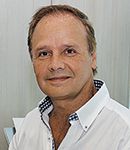
David Leclercq, general manager, Mundipharma
“Colombia is the Latin American country that instills most confidence for the global organization right now and will become the seat of one of only five such service centers worldwide. When fully implemented, the hub will house some 200 employees, spanning support services from customer logistics and procurement to finance and human resources,” elaborates Yolanda Alagón, general manager of Janssen, the group’s innovative pharmaceuticals subsidiary.
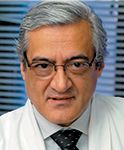
Prof. Enrique Melgarejo Rojas, president, Cardiology Society
MSD, for its part, employs as many as 740 personnel in-country, having elected to base its pharmacovigilance operations and one of the company’s six global data management centers out of Colombia. “The rationale behind setting up these strategic centers in Colombia is the relative stability in the country and an unmatched talent pool with high levels of education and good English knowledge,” admits general manager, Guillermo Browne.

Rocío Mendez, general manager, bioMérieux
Meanwhile smaller entities have been following a similar logic, identifying Colombia as suitably strategically placed to oversee the rest of the Andean area. “Colombia serves as a headquarter for Latin America, a focal point from where we can define marketing, commercial and medical strategies and deploy those to other markets. It simultaneously serves as a training base to our distributors’ sales force,” recounts Zambon’s Eduardo Franky.
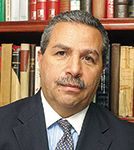
Alberto Bravo Borda, executive president, ASINFAR
One important pull factor is the perceived sophistication of the local market. “Colombia stands out especially because of its manifold distribution channels, maturity and variety which enables you to fine-tune your strategies, before applying and replicating them elsewhere,” deftly points out David Leclercq, general manager for the Andean Region at Mundipharma, yet another multinational choosing to lead out of Bogotá. “Ecuador, for example, is a full 10-12 years behind Colombia in terms of pharmaceutical development and the market is pretty one-dimensional, being heavily controlled to the point where only the institutional channels flourish. Peru, meanwhile, is marginally different in the fact that 70 percent of the market is institutionalized while Venezuela is barely functioning at all,” he continues. As such, Colombia differentiates itself as being the naturally dominant market of the various Andean economies.

Emilio Sardi, executive vice president, Tecnoquímicas
The leadership of Japanese outfit, Astellas, who, as recently as 2016, turned to Colombia to establish only their second ever affiliate in South America, has reached a similar conclusion in their decision-making. “We are keen to earn our spurs in one of the more regularized, mature markets and, to our mind, Colombia very much fits the bill with its extensive coverage, strong regulatory regime and overarching stability,” details general manager, Sandra Cifuentes.

Jaime Calderón, president, IETS
THE ENLIGHTENED STATE
Colombia’s comparatively strong positioning for both pharma and healthcare has not come about purely by accident. On the contrary, it is very much the result of meticulous planning and careful cultivation on the part of the successive administrations of Alvaro Uribe and Juan Manuel Santos.

Francois Léger, general manager, Servier
On the industry side, Colombia is conspicuous for not favoring domestic manufacturers in the tendering process or any other form of trade in the country’s pharmaceutical sector, creating equal opportunities for any entity seeking to operate in the sector irrespective of whether they are indigenous or foreign. This is, of course, a far cry from the sort of protectionist ‘local content’ criteria enforced in Brazil or the mandatory joint-venture ratios and import-substitution industrialization policies encountered in many of the neighboring Latin markets.

However, some Colombians bemoan the fact that their government has been so accommodating to foreign investors and complain that it has come about at the expense of nurturing homegrown drug development. “I personally feel we’re lacking a well-defined national policy to guide and nourish a local manufacturing base,” regrets Emilio Sardi, executive vice president of Tecnoquímicas, the largest national producer and manufacturer in the country. He is quick to point out that local production capacity only accounts for a mere 2.5 percent of the Colombia’s GDP and that, though the manufacturing sector might hold some weight in volume, it remains disproportionately weak in value.

Sandra Cifuentes, general manager, Astellas
Alberto Bravo Borda, President of ASINFAR, the pharmaceutical association for Colombian companies, describes how “trade authorities have for years prioritized the interests of multinationals, disregarding the rights of patients and of society. This has become more noticeable since in the Superintendency of Industry and Commerce, which is the National Industrial Property Office, officials, who were previously working for multinationals, continue to prioritize MNC interests from their public offices.” Borda continues, “Colombia has traditionally respected intellectual property rights, but in the last seven years the country has given an embarrassing amount of privileges to the monopolies.”

Carlos Estrada, general manager, Roche
MNCs, however, tend to be thrilled by the ‘level playing field’ on offer and the sheer openness of the market. Of the 400 free-trade zones in Latin America, 108 are located in Colombia; a major advantage in terms of importing and exporting products. One of these zones is even specifically dedicated to the pharmaceutical sector and counts household names such as Blue Pharma and Amgen among its participants. Then there is Colombia’s steadfast and unwavering commitment to furthering regional economic integration via initiatives such as the ‘Pacific Alliance’, a kind of joint “nation-branding” exercise involving Chile, Mexico and Peru with a view to fostering free movement of merchandise, services, and people across the four member states.

Gustavo Morales, executive director, AFIDRO
Meanwhile, on the healthcare side, considerable efforts have been made to fashion a forward-looking and modernistic public healthcare apparatus in line with international best practice. The national drugs regulator, INVIMA, for instance, is highly regarded across the region and has won plaudits for its time-efficient regulatory approval periods and streamlined approach. “I have been focusing my attention on four key priorities: institutional strengthening, efficiency enhancements, transparency and fostering the institution and country’s competitiveness,” confides Javier Humberto Guzmán, the agency’s energetic and reformist director general. “The only way to attain these goals is to improve our risk based approach by making low risk transactions automatic, to invest heavily in information technology and to collaborate closely with other regulatory agencies to avoid duplication and add value,” he candidly acknowledges.

Jaime Arias, executive president, ACEMI
These endeavors do seem to have been paying off. “It is a point of immense national pride that INVIMA is nowadays officially classified as Level Four regulator by the Pan American Health Organization (PAHO), which places it on an equal footing to 8 other best-in-class National Regulatory Authorities including COFEPRIS of Mexico, ANVISA of Brazil and the United States’ FDA. Not only does this represent an international vote of confidence in the good manufacturing practices and high quality of drugs available in Colombia, but it also means an INVIMA-authorized product automatically gains recognition in certain other parts of the region such as Central America, which ultimately influences the commercial performance of the products,” affirms Alberto Bravo, president of the Asociación de Industrias Farmaceuticas.

Then there is the admirable way in which the Colombian health authorities have been striving to embrace health technology assessment (HTA) methodologies and pharmaco-economic approaches that deliver better outcomes to both patients and society at a large. To this effect, the Colombian Institute for Health Technology Assessment (IETS) has been created as an independent and impartial agency comprising a full-time core team of 30 health economists, epidemiologists and other healthcare professionals with a view to determining which treatments or health technologies should be considered exclusions from public financing and reimbursement. “Our mandate is to generate the best available evidence, taking into account state capacity, clinical and societal outcomes and even public opinion from which we draw up recommendations that can inform decision making. However, we play no direct role in the final reimbursement decisions,” elaborates Jaime Calderón, the institute’s president.

Eduardo Obraczka, general manager, Merck
GREAT EXPECTATIONS, UNSUSTAINABLE FUTURES
The OECD publicly commends Colombia for offering “a remarkable example of rapid progress toward universal health coverage that deserves to be better known internationally”. Nevertheless, for all the heady ambitions about achieving close to 100 percent coverage and the enlightened thinking surrounding implementation of HTA, the brute reality is that Colombian healthcare is not yet on a financially sustainable footing and, at the end of the day, the entire system has been spending well beyond its means.
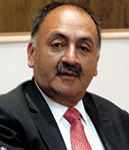
Rafael Romero Pineros, member, Commission 7 at the Chamber of Representatives
“Unfortunately, expanded drug coverage has placed a huge financial strain on the Colombian healthcare industry, which we calculate to have accumulated debts of more than USD four billion,” warns Jaime Arias, executive president of the Asociación Colombiana de Empresas de Medicina Integral (ACEMI). Meanwhile the Ministry of Health has been bracing itself for what it says, in the worst-case scenario, could be year on year increases of some USD 700 million to the national annual pharmaceutical bill.

There are a number of underlying factors contributing to this unfortunate state of affairs. Firstly, there is the rather unorthodox public health structure in which Colombia operates a public healthcare system that is intermediated by private entities known as Empresas Promotoras de Salud (EPS), which function similarly to health insurance firms by collecting premiums from their members, and arranging the provision of services and treatments established and updated by the Ministry of Health.
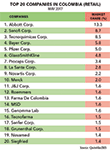
According to Roche’s general manager, Carlos Estrada, “It is paradoxical to have a privately managed system utilizing public funds and doing so can lead to a conflict of interests that would be impossible under a European-style single payer system in which public funds are managed and overseen by a public system.” “The danger with these contradictions within the Colombian system,” he says, “is that the system itself might opt for solutions that are financially beneficial in the short-term, but are clearly disadvantageous over the long-run.” And indeed, many EPS firms now find themselves wallowing in debt and collectively owing the hospitals and clinics that provide treatments an estimated USD 2.9 billion according to Global Health Intelligence.

Héctor Castro, director of medicines and health technology, Ministry of Health & Social Protection
Another factor relates to the epidemiological and demographic shifts taking place within the country. “Lifestyle diseases such as diabetes and cardiovascular ailments are growing exponentially in emerging markets and Colombia is no exception. Incidence of respiratory disease and cancers is also on the rise due to lifestyle habits such as smoking and exposure to pollution, and also in line with increased life expectancy, all of which is placing considerable strain on the system,” asserts Boehringer Ingelheim’s general manager, Javier Castro.
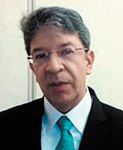
Carlos Francisco Rodríguez, medical advisor, El Tiempo
Most industry actors, however, attest that the root cause is more about the state’s reluctance to allocate sufficient money towards health expenditure. “I think all stakeholders will agree, the government’s health expenditure as a proportion of GDP is way too low. In Colombia, healthcare spending accounts for only 7.2 percent of GDP, whereas other Latin American countries have around nine percent. Reaching the OECD baseline on spending is of paramount importance if Colombia wants to reabsorb the financial and service strains linked to the lack of spending,” declares Merck general manager, Eduardo Obraczka.

“Financial sourcing constitutes the principal challenge of our healthcare system today. The Ministry is going to be compelled to identify new channels of funding and the allocation of our resources is going to have to be optimized so that we can achieve more with less,” bluntly concludes Congressman Rafael Romero Piñeros, a member of the House of Representatives’ Commission Seven dedicated to public health and welfare.

Claudio Ferrari, general manager, Scandinavia Pharma
A RADICAL INSIDE THE MINISTRY
Faced with this harsh reality, the tremendously popular Health Minister, Alejandro Gaviria, an economist by background, has, since his nomination back in 2012, zealously been setting about implementing a tranche of measures aimed at reining in spending and catapulting Colombian public healthcare back into the black.

Marisol Sánchez, executive president, ANDI’s Medical Device Chamber
These have included subjecting drug price tags to international reference pricing (IRP), overhauling procurement, digitalizing medical records, and handing extra autonomy to physicians in their prescription decision-making. Much attention has also been given over to the redesign of entry requirement mechanisms and the introduction of an exclusion list of non-reimbursable items – namely treatments that do not have robust scientific evidence to back them up, and aesthetic procedures.

Fernando Dussan, country director Andean region, Boston Scientific
“In the future, we’re going to be requesting laboratories to provide additional information on the comparative safety and efficacy of new products as we strive to inject efficiency and informed decision-making into the entire reimbursement process,” affirms Héctor Castro, director of medicines and health technology at the Ministry. “The recent creation of a centralized purchasing unit within the Ministry of Health should also go a long way to increasing our price regulating power,” he predicts.

Most controversial of all, however, has been the Minister’s decision to subject Novartis’ leukemia drug, Glivec, to a Declaration of Public Interest (DPI) and to threaten to issue a compulsory license that would have allowed the sale of generic versions of the drug in spite of the Swiss multinational’s patent. Such a decision naturally sent shockwaves throughout the global pharma industry well beyond Colombia’s own frontiers because it appeared to dispute the sanctity of intellectual property, one of the fundamental frameworks the biomedical research sector relies on for its existence. For El Tiempo’s Carlos Francisco Rodríguez, what really made the issue so emotive was that “it appeared to confer legitimacy on the idea that social interests should be placed above economic benefits.”
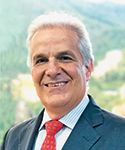
Guillermo Gómez, managing director Andean zone, Siemens Healthineers
Whatever the initial intention, the upshot of the Glivec standoff (the agreed price of which has now been reduced by some 60 percent) has been to symbolically close a chapter on a period of Wild West, unregulated pricing structures when products such as Interferon beta-1b, used in the treatment of multiple sclerosis, would be listed in Colombia at prices some 30 times higher than in Western European markets. In the words of the Universidad de los Andes’ Professor Tatiana Samay Andia “what used to be quite simply an orgy of profit for some of the big pharma MNCs locally implanted, has come to an abrupt end.”

Juan Moncada, general manager, Colombia & South Latin markets, Baxter
“It’s tricky to find equilibrium between commercial interests, patient rights and financial sustainability, especially in a judicialized system with an empowered citizenry. Yet our blend of pharmaceutical policy, combining price controls, biosimilar competition, HTA, and centralized bargaining, strives to do just that. We are dedicated to crafting a system based on a coherent social contract that eliminates the regional and socioeconomic inequalities in outcomes, that bridges the gap between patient coverage and access, and that is appreciated by the public at large. Already we have the foundations in place and are making steady progress towards materializing this promise,” confidently declares Gaviria.
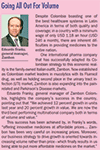
RAGING AGAINST THE MACHINE
Predictably the industry has been vocal in its opposition to cost-cutting, albeit while simultaneously expressing sympathy with the public sector’s woeful financial predicament. “We do accept the fact that there are price controls because this is a system that is, for the most part, paid for by the government. What matters most of all to our members, however, is that the regulation is applied in a systemic, predictable way so that it does not wreak havoc with company business plans. Unfortunately, we feel this has not always been the case,” laments Gustavo Morales Cobo, executive director of the Asociación de Laboratorios Farmacéuticos de Investigación y Desarrollos (AFIDRO). “In the areas of intellectual property and compulsory licenses, we think there has been a fundamentally misguided approach. Furthermore, we regret that the emphasis placed on prices has led the authorities to dismiss outstanding issues such as fraud, corruption inefficiency, and preventative care and resoundingly urge all stakeholders to work together in concert to address these pressing challenges,” he declares.
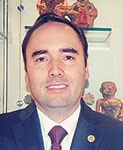
Esteban Lizarazo, general manager, Grupo Amarey Nova Medical
Many industry commentators are quick to point out the adverse impacts of price-slashing and austerity. Claudio Ferrari, general manager of Scandinavia Pharma, laments that “Lately, the price of many drugs within the government tenders has been severely reduced. While we understand the necessity for such actions, the authorities need to realize that there is a risk that some products might disappear from the market entirely because their distribution is not rentable for the companies any longer, and that there is not always an alternative. In the end it is the patients themselves who lose out,” he concedes. “High technology products that offer the greatest clinical advantages should always be the priority in the reimbursement agenda, and yet this race to the bottom on price juxtaposed with an already highly competitive market sends out the wrong signal.”

Adriana Forero, general manager Colombia & Venezuela, GSK
Others are appealing for a wholesale rethink. “While universal healthcare coverage is a seductive concept in theory, the basic facts on the ground tell us that the system cannot afford to realize this ideal. Despite a genuine willingness to provide access to the latest medical technology, there are insufficient public funds to achieve this goal. We therefore need to start thinking outside the box and constructively consider solutions that strike a better balance such as co-payments for specific treatments or performance related deals,” advocates Boston Scientific’s country director for the Andean region, Fernando Dussan. “We can start reconsidering the nature of healthcare as well, such as scoping in on contemporary, patient-centric formulas that simultaneously scale down costs by reducing medically unnecessary services such as some types of hospital stays.”
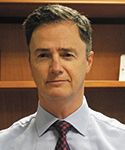
Guillermo Browne, general manager, MSD
INTEGRATORS: WHITE KNIGHTS TO THE RESCUE
Of all the actors posing solutions to this conundrum, technology and medical device integrators spy an excellent opportunity to collaborate with the state and render public hospitals, clinics and surgeries more efficient and fit-for-purpose. Marisol Sánchez, executive president of ANDI’s Medical Device Chamber, explains that “as Colombia hosts some of the best hospitals in Latin America, there is a high level of compatibility with the latest medical devices.”

The big challenge in Colombia is the mismatch between needs and resources: the government has massive ambitions, but not always the commensurate financial firepower to materialize them. Therefore, companies like Philips are offering to implement efficient hospital management and assist the authorities in generating a bigger bang for every peso they spend.

Harold Karam, general manager, Farma de Colombia
Philips’ pivot towards healthcare comes at a very opportune time for Colombia where there is excellent momentum behind putting in place radically new forms of healthcare provision. There seems to be great alignment between the structural changes within technology and equipment companies like Philips and Colombia’s readiness to rethink its model of public healthcare provision.
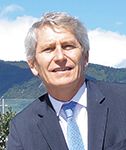
Pierre Faraldo, executive vice president, Laboratoires Biopas
In the past, medical device companies would bring innovative, best-in-class diagnostics to the market and others would perform the integration process. Nowadays these companies are the integrators as well. This means that the size of market is no longer necessarily a handicap. On the contrary, the Colombian market lends itself well to trialing out and experimenting with new kinds of solutions.
Indeed, right now, there is a stampede of big-brand techno-logy firms offering integration services and turnkey solutions, all angling for a slice of the action. “We consider that it is time to change the relationship between the technology and the healthcare providers in Colombia so as to take costs out of the system,” insists Siemens Healthineers’ general manager, Guillermo Gómez. “A few years ago, we enjoyed great success collaborating with the Tumaco clinic on the construction of a new facility. Together with the architectural partner we rethought the design with a focus on reducing the number of movements for the patient within the clinic in order to impact the efficiency of the whole institution,” he remembers. “We have other game-changing initiatives on the way and will be looking to harness the digital revolution to advance preventative healthcare.”
Baxter RTS, the renal service segment of Baxter in Colombia, another heavyweight multinational, has been mobilizing its 82 partnerships with hospitals around the country to establish an innovative integrated care model for patients requiring dialysis, cardiovascular and diabetes treatments. “Colombia is actually very open to embracing new concepts of provision such as home care: 40 percent of hemodialysis functions are now performed within the patients’ own home, compared to the sort of figure we would normally expect for this type of country which would be around 10 percent,” points out the American entity’s general manager, Juan Moncada. “We are now going to be operating across the entire healthcare continuum leveraging real-time data so that doctors can track how effectively their patients are following the treatment course and so they can make the necessary adjustments to ensure optimum results,” he discloses.
Grupo Amarey Nova Medical, meanwhile, has been focusing its energies on smoothing out delays in drug delivery, misclassification and storage failure, having identified that up to 30 percent of hospital overcharges result directly from bad logistics practices. “Hospital logistics tends to be an inefficient and impoverished activity, not only in Colombia, but across the world. Many public health providers are decades behind private sector benchmarks on best practice in supply chain management, so we are confident that this is an area where we can deliver big impacts… right now we are deploying a state-of-the-art logistics model that is able to supply any pharmaceutical or medical device product in less than two hours to public facilities within the Colombian national territory,” proudly claims general manager Esteban Lizarazo.
Already, Grupo Amarey has been making waves in associated areas of health provision optimization. Conscious that having latest generation medical devices is useless without the requisite expertise in how to operate them, the group has established a high-end simulation center, inspired by the Harvard University model, dedicated to training up medical professionals in orthopedic, laparoscopic and robotic operations. Equally the firm has raised eyebrows for its introduction into Colombia of Da Vinci Robotic Surgical Systems that facilitate complex surgery using a minimally invasive approach that is controlled by a surgeon from a console.
THE QUEST FOR SOLUTIONS
Innovative drug developers are also increasingly looking beyond their traditional roles as purveyors of pills as they too scramble to identify win-win solutions to the funding squeeze. “Our recently launched immuno-oncology drug is tied with a biomarker, meaning that the patients go through a test, and if the test is conclusive, the doctor will prescribe the product assuring that the treatment will be personalized. This action increases the likelihood of success in the treatment and reassures the payer and the government that the product will be effective,” attests MSD’s Guillermo Browne.
GSK has also been trialing out a fresh approach. “We have been integrating a strong pricing strategy into our business model, focused on reducing the prices of our products as this has actually become part of our corporate DNA at our Colombian affiliate,” narrates general manager, Adriana Forero. “A good example of the progress that we have made is the Expanded Program of Immunization in Colombia that operates under the Ministry of Health and Social Protection with the goal of making vaccines available and accessible countrywide. In view of the significant volumes of vaccines that the Colombian market requires and associated onerous cost-burden, we have been working up and down the entire value chain to identify savings that are consistent with our pricing policy, access commitment and reputation for upmost quality. I am proud to be able to announce that the price of our pneumococcal vaccine has subsequently dropped by some 20 percent in the space of five years.”
At the same time, Janssen, having long championed the concept of ‘patient centricity’ is looking forward to the challenge of outcome-based assessment being conducted locally with the onset of bodies such as the IETS. “The regulatory framework seems to be gradually moving in the direction of appreciating the comparative value that the drugs bring to the marketplace. We believe that we are well positioned to deliver up precisely the sort of transformational innovation that compete on these terms,” remarks Yolanda Alagón, recalling the July launch of a sophisticated new product for multiple myeloma which will not only prolong the lifespan of patients but will also significantly enhance their quality of life thus enabling them to live more productively.
COPING STRATEGIES
For other firms, and especially the locals, responding to the authorities’ cost-containment drive actually entails modifying their business strategies. Biopas, which has had a stratospheric rise from 60th position in the Colombian pharma market to its current top 20 ranking, has diversified its product offering to become the distributor of Sativex, the first marijuana-based drug in Latin America, used by patients with multiple sclerosis to treat muscle pain. Executive vice president Pierre Faraldo explains that “Bringing to the market the first cannabinoid based drug in the whole of Latin America perfectly matches our company’s values and mission to remain one of the most innovative companies in the market targeting unmet needs, while bringing new therapies in CNS, one of our core areas of focus.”
Biopas’s accumulated knowledge of the Colombian market, especially in terms of market access, has helped it establish a reputation as a leading expert in the field and an ideal partner for international companies. Faraldo points out that “Biopas’s customers have had to cope with market access difficulties and in this context, Biopas has undoubtedly been positioned as an expert in the field, having registered a significant number of products in a relatively short time-span. In the last 12 months, we registered 114 products in the markets we are in, while we are currently presenting more than 100 products in the registration process.”
Farma de Colombia has meanwhile been experimenting with different techniques to ensure success. “We decided to make certain amendments to shore up our positioning. First, we have been increasing our market share, simultaneously in the primary care and OTC markets as a way of spreading or risk exposure and hedging our bets. The intention is to achieve 50-50 split between private and institutional clients so as to insulate our cash flow, but we continue to believe big in the future of the institutional segment in view of the relentless expansion of public healthcare coverage,” explains general manager, Harold Karam.
